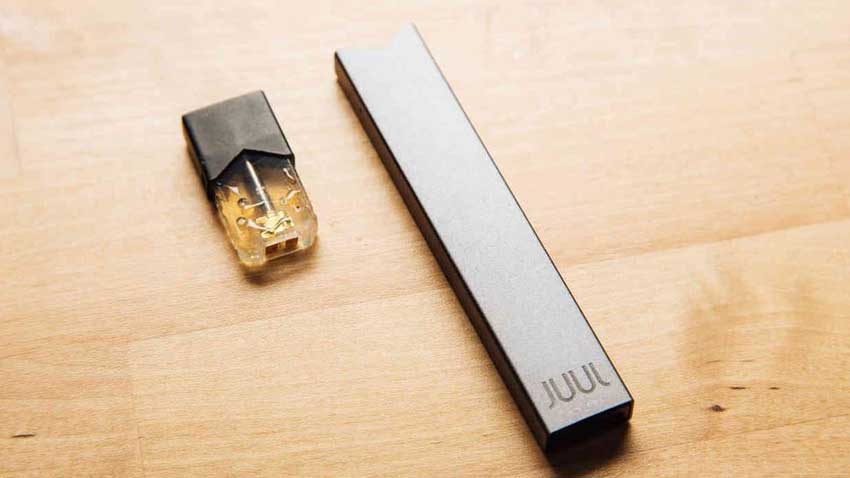If you are wondering whether you can bring a wooden stick on a plane, the answer is yes, you can. However, there are certain rules and regulations that you need to follow to ensure a smooth and hassle-free travel experience. It is important to check with the airline and the Transportation Security Administration (TSA) for specific guidelines regarding the size, shape, and packaging of the wooden stick.
In general, small wooden sticks, such as those used for hiking or camping, are usually allowed in carry-on luggage or checked bags. However, larger sticks or those with sharp ends may be considered as potential weapons and may need to be checked or shipped separately.

It is advisable to pack the wooden stick securely and consider using a padded bag or a protective case to prevent any damage. Always notify the security personnel at the airport about any sharp or potentially dangerous items in your luggage to avoid any issues during the security screening process.
To summarize, while you can bring a wooden stick on a plane, it is crucial to comply with the airline and TSA guidelines and ensure proper packaging to ensure a safe and hassle-free journey.

Ensuring Safe Travel with Wood Products
Wood products are widely used in various industries, from construction to furniture manufacturing. However, when it comes to transporting wood products, there are certain considerations that need to be taken into account to ensure the safety of the goods and comply with regulations. In this section, we will explore the key factors involved in ensuring safe travel with wood products.
1. Packaging and Crating
One of the first steps in ensuring safe travel with wood products is proper packaging and crating. The packaging materials used should be sturdy enough to withstand the rigors of transportation, protecting the wood products from damage. It is important to choose packaging materials that are specifically designed for the type of wood product being transported.
When it comes to crating, it is essential to use crates that are strong enough to support the weight and size of the wood products. The crates should be properly constructed and reinforced to prevent any shifting or movement during transit.
2. Moisture Control
Wood is highly sensitive to changes in moisture levels, which can lead to warping, cracking, or mold growth. Therefore, it is crucial to control moisture levels during transportation to ensure the integrity of the wood products.
One way to control moisture is by using moisture-resistant packaging materials, such as moisture barriers or vapor barriers. These materials help to create a protective layer around the wood products, preventing moisture from seeping in. Additionally, it is recommended to include desiccant packets inside the packaging to absorb any excess moisture.
3. Compliance with ISPM 15 Regulations
When transporting wood products internationally, it is important to comply with the International Standards for Phytosanitary Measures No. 15 (ISPM 15) regulations. These regulations aim to prevent the spread of pests and diseases through wooden packaging materials.
ISPM 15 requires that all wooden packaging used in international trade be treated with approved methods to eliminate pests and larvae. This treatment usually involves heat treatment or fumigation, which helps to ensure the safety of the wood products and prevent the spread of invasive species.
4. Proper Handling and Loading
The way wood products are handled and loaded onto transportation vehicles can greatly impact their safety during travel. It is important to follow proper handling procedures to minimize the risk of damage.
Wood products should be lifted and moved using appropriate equipment, such as forklifts or cranes, to avoid any mishaps or accidents. Loading onto vehicles should be done carefully, ensuring that the weight is evenly distributed and secured to prevent any shifting during transit.
5. Insurance Coverage
While taking all the necessary precautions, accidents can still happen during transportation. Therefore, it is advisable to have proper insurance coverage in place to protect the value of the wood products in case of any unforeseen events.
Insurance coverage can provide financial protection in case of damage or loss during transit, giving peace of mind to both the sender and the receiver of the wood products.
Summary
Ensuring safe travel with wood products requires careful consideration of packaging and crating, moisture control, compliance with regulations, proper handling and loading, as well as having appropriate insurance coverage. By following these guidelines, wood products can reach their destination safely, maintaining their quality and integrity.

Tips for Carrying Wooden Objects during Air Travel
Traveling by air can be a convenient and efficient way to reach your destination, but it can also present challenges when it comes to carrying certain items. If you need to transport wooden objects during your air travel, it’s important to take certain precautions to ensure their safety and prevent any damage. In this section, we will provide you with some valuable tips on how to carry wooden objects during air travel.
1. Choose the Right Packaging
Proper packaging is crucial to protect your wooden objects during air travel. Start by wrapping the item in a soft material such as bubble wrap or foam to cushion it from any impact. Then, place it in a sturdy box that fits the dimensions of the object. Make sure to fill any empty space inside the box with packing peanuts or crumpled newspaper to prevent the item from shifting during transit. Secure the box with strong packing tape to ensure it stays closed throughout the journey.
2. Check Airline Restrictions
Before you travel, carefully review the restrictions imposed by the airline regarding the transportation of wooden objects. Some airlines may have specific guidelines or limitations on the size and weight of wooden items that can be carried onboard or in checked baggage. Make sure to comply with these regulations to avoid any complications or delays at the airport.
3. Protect Against Moisture
Wood is highly sensitive to changes in moisture levels, so it’s important to protect your wooden objects from excessive humidity during air travel. Consider using a moisture barrier such as plastic wrap or a specialized moisture-resistant bag to shield the item from any potential moisture that may be present in the cargo hold or cabin. Additionally, avoid storing the wooden object in areas of the aircraft that are prone to condensation, such as near the windows or doors.
4. Label and Identify
To minimize the risk of your wooden object getting misplaced or lost during air travel, it’s essential to label it properly. Use a permanent marker to write your name, contact information, and destination address directly on the packaging. Additionally, include a fragile sticker or label to alert the airport staff about the delicate nature of the item. By clearly identifying your wooden object, you increase the chances of it being handled with care throughout the journey.
5. Consider Insurance
If you are traveling with valuable or sentimental wooden objects, it may be wise to consider purchasing additional insurance coverage. While airlines generally have liability limits for lost or damaged baggage, these limits may not fully compensate you for the value of your wooden item. Contact your insurance provider to inquire about coverage options for your specific needs. Having insurance can provide peace of mind and financial protection in case of any unforeseen incidents.
6. Carry-On vs. Checked Baggage
When deciding whether to carry your wooden object as carry-on or checked baggage, consider its size, weight, and fragility. Smaller and more delicate items are often better suited for carry-on luggage, as you can personally handle and protect them throughout the journey. However, if your wooden object is larger or more durable, it may be more practical to pack it securely in a checked suitcase or box. Evaluate your options and choose the method that ensures the safest transportation for your wooden object.
7. Seek Professional Assistance
If you are unsure about how to properly pack or transport your wooden object, consider seeking professional assistance. There are specialized services available that can help with packaging and shipping delicate items, including those made of wood. These professionals have the expertise and experience to ensure your wooden object is adequately protected during air travel.
8. Inspect Upon Arrival
Once you reach your destination, take the time to carefully inspect your wooden object for any signs of damage or issues caused during transit. If you notice any problems, document them with photographs and report them to the airline or insurance company as soon as possible. Promptly addressing any issues can help you resolve them more effectively and increase the chances of receiving appropriate compensation, if applicable.
In summary, carrying wooden objects during air travel requires careful planning and attention to detail. By following these tips, you can minimize the risk of damage to your wooden item and ensure its safe arrival at your destination. Remember to check airline restrictions, choose appropriate packaging, protect against moisture, label your item, consider insurance, and decide on the best method of transportation. With these precautions in place, you can enjoy a worry-free journey with your cherished wooden possessions.

Understanding TSA Rules for Bringing Wood on a Plane
Traveling by air can often be a stressful experience, with all the rules and regulations that need to be followed. One area that can cause confusion for many travelers is bringing wood on a plane. Whether you’re planning to bring back a souvenir or you need to transport wooden items for personal or business reasons, it’s important to understand the guidelines set by the Transportation Security Administration (TSA).
1. Types of Wood Allowed
When it comes to bringing wood on a plane, the TSA categorizes it into two main types: solid wood and processed wood products. Solid wood refers to items made entirely of wood, such as furniture, carvings, or musical instruments. Processed wood products, on the other hand, are items that contain wood but have undergone manufacturing or treatment processes, such as plywood or particleboard.
Both solid wood and processed wood products are generally allowed on planes, but there are some exceptions and restrictions to be aware of. It’s important to check the specific regulations for your destination as different countries may have additional requirements.
2. Size and Weight Restrictions
The size and weight of the wooden items you plan to bring on a plane can also affect whether they are allowed or not. While there are no specific dimensions or weight limits set by the TSA, it’s essential to ensure that your wooden items comply with the airline’s baggage restrictions.
If your wooden item is too large or heavy to fit in the overhead compartment or under the seat in front of you, it may need to be checked as oversized or fragile luggage. It’s advisable to contact your airline in advance to inquire about their specific policies regarding oversized or fragile items.
3. Preparing Wooden Items for Travel
Before traveling with wooden items, it’s crucial to properly prepare and secure them to prevent damage during transport. Here are some steps to follow:
- Wrap the wooden item in bubble wrap or a soft cloth to protect it from scratches or dents.
- If the wooden item has any sharp edges or protruding parts, consider padding them with foam or additional cushioning material.
- Secure any loose or detachable parts of the wooden item to prevent them from getting lost or damaged.
- Place the wrapped and secured wooden item in a sturdy bag or suitcase to provide additional protection.
4. Additional Considerations
While the TSA allows travelers to bring wood on a plane, there are a few additional considerations to keep in mind:
- Some wooden items, such as those with ivory inlays or certain bird feathers, may be subject to international trade restrictions. Ensure that your wooden item complies with the regulations of both your departure and destination countries.
- If you’re planning to bring a wooden item that is extremely valuable or irreplaceable, consider purchasing additional insurance coverage to protect it against loss, damage, or theft.
- It’s always a good idea to arrive at the airport early to allow sufficient time for security screening and any necessary inspections of your wooden items.
5. Summary
Understanding TSA rules for bringing wood on a plane is essential to ensure a smooth and hassle-free travel experience. Remember to check the specific regulations for your destination, adhere to size and weight restrictions, properly prepare your wooden items for travel, and consider any additional factors like international trade restrictions or insurance coverage. By following these guidelines, you can confidently travel with wooden items while complying with the necessary regulations.
Packaging and Protecting Wooden Sticks for Air Transportation
When it comes to shipping wooden sticks via air transportation, proper packaging and protection are crucial to ensure the safety of the cargo. This article will outline the necessary steps and considerations for packaging and protecting wooden sticks for air transportation.
1. Choosing the Right Packaging Materials
When selecting packaging materials for wooden sticks, it is important to choose sturdy and durable options that can withstand the rigors of air transportation. Some suitable packaging materials include:
- Cardboard Boxes: Opt for high-quality, double-walled cardboard boxes that provide adequate protection against impact and compression forces.
- Bubble Wrap: Wrap each wooden stick individually with bubble wrap to provide cushioning and prevent any potential damage during transit.
- Foam Inserts: Use foam inserts or dividers inside the box to keep the wooden sticks securely in place and prevent them from moving around.
- Tape: Seal the boxes with strong adhesive tape to ensure they remain closed throughout the transportation process.
2. Properly Securing the Wooden Sticks
It is essential to secure the wooden sticks within the packaging to prevent any movement or shifting during air transportation. Here are some ways to achieve this:
- Strapping: Use heavy-duty strapping materials to secure the wooden sticks together and prevent them from separating or shifting.
- Padding: Place additional padding, such as foam or bubble wrap, between the wooden sticks to reduce the risk of friction and potential damage.
- Dividers: If multiple wooden sticks are being shipped in one box, consider using dividers to create separate compartments and prevent them from coming into contact with each other.
3. Labeling and Marking
Proper labeling and marking of the packaging are crucial for the safe transportation of wooden sticks. Here are some key points to keep in mind:
- Fragile Label: Clearly label the packages as “Fragile” to alert handlers to exercise caution and avoid rough handling.
- Directional Arrows: Mark the packaging with directional arrows to indicate the correct orientation of the wooden sticks during transportation.
- Identification: Include labels or tags with relevant information such as the sender’s and recipient’s details, as well as any specific handling instructions.
4. Consulting Airline Regulations
Before shipping wooden sticks via air transportation, it is essential to consult the specific regulations and guidelines set by the airline or transportation service. These regulations may provide additional requirements or restrictions related to packaging, dimensions, weight, and labeling.
5. Insurance Coverage
Consider obtaining insurance coverage for the wooden sticks during transportation. This will provide financial protection in the event of any damage or loss that may occur during the shipping process. Contact your chosen transportation service provider to inquire about insurance options.
Summary
Proper packaging and protection are imperative when shipping wooden sticks via air transportation. Choosing the right packaging materials, securing the wooden sticks properly, labeling and marking the packages accurately, adhering to airline regulations, and considering insurance coverage are all essential steps to ensure the safe delivery of wooden sticks to their destination.
FAQs
Can I bring a wooden stick on a plane?
Yes, you can bring a wooden stick on a plane as part of your carry-on luggage or checked baggage. However, it is recommended to check with your airline beforehand to ensure that there are no specific restrictions or regulations regarding the size or type of wooden stick allowed.
What items are not allowed on a plane?
There are certain items that are not allowed on a plane, such as explosives, flammable materials, sharp objects, and hazardous chemicals. Additionally, some airlines may have specific restrictions on certain items, so it’s important to check with your airline before packing your bags.
Can I bring liquids in my carry-on luggage?
Yes, you can bring liquids in your carry-on luggage, but they must adhere to the 3-1-1 rule. Each passenger is allowed to bring one clear, quart-sized bag containing liquids or gels that are in containers of 3.4 ounces (100 milliliters) or less per item. This bag must be placed in a separate bin during the security screening process.
Conclusion
In conclusion, while it is generally allowed to bring wooden sticks on a plane, it is important to consider certain factors and regulations. The Transportation Security Administration (TSA) advises that any item, including wooden sticks, should not pose a security threat or be considered a potential weapon. It is always recommended to check with the airline and TSA guidelines regarding carry-on items to ensure smooth travel experience. Additionally, be mindful of the length and size of the stick, as well as any restrictions on sharp or pointed ends. Packing the wooden stick securely and following the rules would help avoid any issues during security checks.